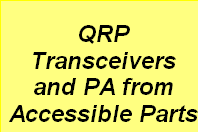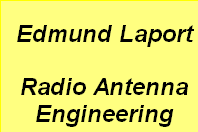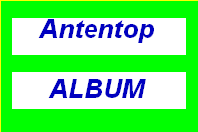

Antentop is FREE e-magazine devoted to Antennas and Amateur Radio an
Special page devoted to
A Simple SSB Transceiver

Custom Search
|
ANTENTOP-
01- 2004, # 005 |
A
Simple SSB Transceiver
|
|
|
|
|
|
|
|
Credit
Line:
http://farhan.net.co.nr/
|
by
Ashhar Farhan
computercorp@hotmail.com |
|
|
|
|
A dual-band transceiver
with a crisp receiver and a clean SSB signal is described. It
started its life as an investigation of the excellent S7C receiver
described in EMRFD. This transceiver was specifically designed
to use components that are easily available in TV and Radio spares
shops. The receiver sports an above average dynamic range, very
clean signal and noiseless performance. Although the components
are easily available, and every detail about making it is covered
here, this is not a weekend project. The design is elaborate and
invites improvisation. We decided to pursue
the following rules in designing this transceiver: ►Use what is easily available. Very often, we find designs
that look good but they use exotic parts like TUF-1 mixers that
are simply impossible to get hold of in India and other countries.
Instead, we have tried using those spares that are universally
available. ►Keep impedances and gain low: Often, we try coaxing maximum
gain out of a stage making it difficult to duplicate and stabilize.
We chose to take only modest gain out of each stage, using extensive
feedback to make the circuit stable. Most of the interconnections
between modules are for 50 ohms termination. In fact, the rig
was a number of discrete board connected using RCA audio cables
and sockets before we hooked it all up together to work. ►No PCB. We directly solder the components over a plain
copper clad board (un-etched PCB). It is an excellent way to experiment,
physically robust and has a quick and dirty appeal. You can usually
solder up a whole circuit as you think it out in a few minutes.
See the pictures. ►Broadband. We wanted to be able to use broadband design where
applicable. We have found that the television balun cores are
an excellent and very cheap (about Rs. 2 per balun, that is 5
cents) way of making broadband transformers. ►Modest cost.
While
we didnot want to use very expensive components. We didn'ít
want to compromise the performance either. You will see that we
have used 2N3866 exclusively. This was because we found that the
BF195/BF194/2N2222 series transistors available in the market
were consistently inferior in the HF range and performed below
their stated specs. The 2N3866 is commonly
|
used in cable TV equipment and has a good HF
performance: both as a low noise small signal transistor as well
as driver up to 1 watt level. 2N3866 is expensive (about Rs.20
each, but well worth the expense). It is used in a number of critical
places.
►Measure what you have built. We used a 12 volt 1.5A power
supply, a frequency counter, a test oscillator (to measure the
crystals and coils) and a high impedance voltmeter with an RF
probe to test and measure the design. All these test equipment
were homemade. The transmitter design did require a PC-based oscilloscope.
It helped us identify the spurs and harmonics using the in-built
FFT functionality. But now that the design is complete, just an
RF probe and a 14MHz receiver are enough to align the rig. ►Quality over quantity. A better signal is preferred to a bigger
signal. This is a 6 watt design that will work off a simple 12V,
1.5A supply (using a single 7812). The
ladder crystal filter
A good filter is
central to the crispness of a receiver and the quality of the
transmitter. There are two types of crystal filters possible,
the lattice filter and the ladder filter. The lattice filter requires
ordering crystals with 1.5 KHz frequency difference between them.
This was ruled out, also procuring readymade
filters from BEL India and other sources was ruled out as it is
too expensive to do that. Instead, a ladder filter was chosen.
The ladder filter offers results as good if not better than a
lattice filter. However, the design is crucially dependent upon
internal parameters of the crystals used. It is not possible to
suggest any generic values for the capacitors to be used in the
ladder filter. Rather, a method to measure each of the crystals
and calculate the capacitor values has been worked out. We present
this here. This design procedure will work only for 10 MHz crystals.
10Mhz is the chosen IF of our filter as the crystals are easily
available and it sits comfortably between 7 and 14 MHz amateur
bands. We have followed the Butterworth design methodology given
in the new ARRL book "Experimental Methods in RF Design".
The circuit centers
around a four crystal ladder filter. Each lot of crystals from
each manufacturer differs from the others. We will describe a
way to experimentally calculate the values of the capacitors for
the filter. You should probably buy 10 crystals and select 5 of
them. |
|
|
|
|
Page 64 |
|
 |
 |
 |
 |
Just for Fun:

Powered byIP2Location.com
Thanks for your time!
Last Updated:
February 26, 2020 21:27




